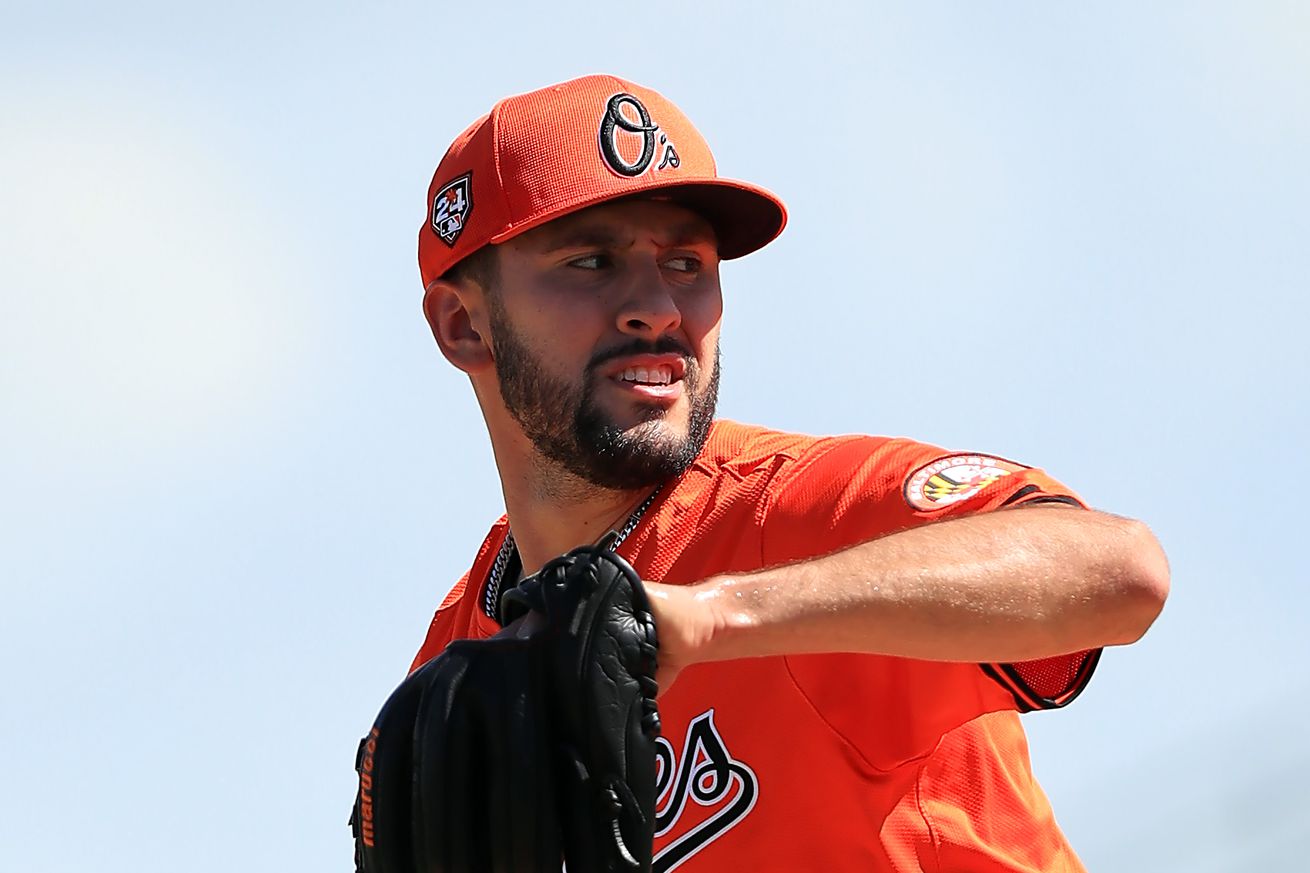
A dominant second half in 2023 will serve as the building blocks for Rodriguez, who enters his sophomore season looking to provide a full season of dominant work on the mound.
The early days of Grayson Rodriguez’s rookie season were rough. A poor spring (7.04 ERA over 15.1 IP) kept him off the Opening Day roster altogether before a freak injury to Kyle Bradish in the first week of the season created a void in the rotation. A decent debut against the Rangers (5.0 IP, two runs, four hits, one walk, five strikeouts) was quickly forgotten as the then-23-year-old struggled each time out to the mound. Through his first 10 starts as a big leaguer, Rodriguez owned some putrid numbers: 7.35 ERA, 5.90 FIP, and a .956 opponents’ OPS. He deserved to be demoted.
Back down in Triple-A Norfolk, Rodriguez found his footing. Over five starts in June he accumulated a 2.22 ERA over 28.1 innings while striking out 39. His walks were a tad high at 12 in that time, but the important thing was that he limited damage. After serving up 11 home runs in his previous 21 innings with the O’s, Rodriguez allowed just three dongs in his first month back with the Tides.
Things went even better to begin July. Across his final nine innings in Norfolk, Rodriguez gave up just four hits, walked three, and struck out 15, bringing his minor league ERA down to 1.96 for the year. The Orioles deemed him ready for another shot in the show.
From July 17 through the end of the season, Rodriguez was phenomenal. His 2.58 ERA in that time was fifth-best in the league. His 2.76 FIP was fourth-best. While his 8.57 strikeout per nine and 2.47 walks per nine were both more good than great, there was no denying that the rookie had become elite at keeping the ball in the park. His home runs per nine rate dropped to 0.35, the best among qualified pitchers in that timeframe. It was a tremendous improvement from early in the season when he was among the league’s worst with a 2.58 homers per nine rate.
So, what changed? Well, for starters, Rodriguez switched up his pitch mix. The cutter had been a problem for him. Opponents slugged 1.273 on it in May. He largely shelved it upon his return. Instead, he leaned on his four-seamer even more, which also came with a little added velocity behind it, jumping from 97.2 mph in May to 97.9 mph in July and 98.3 mph in August. That helped to make his changeup become more effective as well. On top of that, Rodriguez pitched in the zone more often, seemingly less worried about contact and more focused on staying ahead in the count.
Unfortunately he picked a bad time to have his worst start of the season. In game two of the ALDS, the eventual World Series champion Rangers smacked him around for 1.2 innings, scoring five times on six hits, four walks, and two strikeouts. On that day, the rookie looked like a rookie.
But that doesn’t wipe away all of the progress Rodriguez made after his mid-season return. Rather than getting discouraged, he showed an ability to adapt and learn. That sets him up well for his sophomore campaign, a season in which he will be counted on as the number two of the staff behind Corbin Burnes, at least until Kyle Bradish (fingers crossed!) returns.
ZiPS projections:
4.06 ERA, 3.90 FIP, 141.7 IP, 153 SO, 42 BB, 2.2 fWAR
These would be only a minor improvement over his full season numbers in 2023. The number that really stands out is the 141.7 innings. Between MLB and Triple-A, Rodriguez threw 163.1 frames and would seem poised to meet or exceed that in 2024. That doesn’t exactly promise better performance, but it should permit him to rack up more strikeouts and gain crucial experience.
The case for the over:
Growth and development isn’t always linear. Just because Rodriguez seemed to “figured it out” in the second half last year doesn’t mean he has mastered the mound just yet.
A big part of Rodriguez’ success later in the season was due to limiting home runs, but those numbers may have been a little too good to be true. No qualified pitcher matched his 4.5% home run per fly ball rate over the entire season. Sonny Gray was close at 5.2%, but no one else was within reach. Some regression should be expected, and might be enough to push him over these modest numbers.
The case for the under:
The second-half version of Rodriguez did more than just keep the ball in the park. That guy was nasty. He was fourth in MLB with 126 Stuff+, and 14th with 104 Location+, which netted out to 111 Pitching+, tied for third-best in the sport. In other words, his pitches had crazy physical characteristics, he was dotting them around the zone, and that made him an elite pitcher overall. That’s not just good for a rookie, it would put him in the Cy Young discussion over an entire season.
His projection here is a bit underwhelming. Provided he’s healthy and he is anywhere near the pitcher he was late last season, Rodriguez should blow these numbers out of the water.
**
Now, let’s hear from you! The Orioles are going to lean on Rodriguez a lot in 2024. Is he poised to make his case as the staff ace for years to come? Or will he suffer a sophomore slump?
